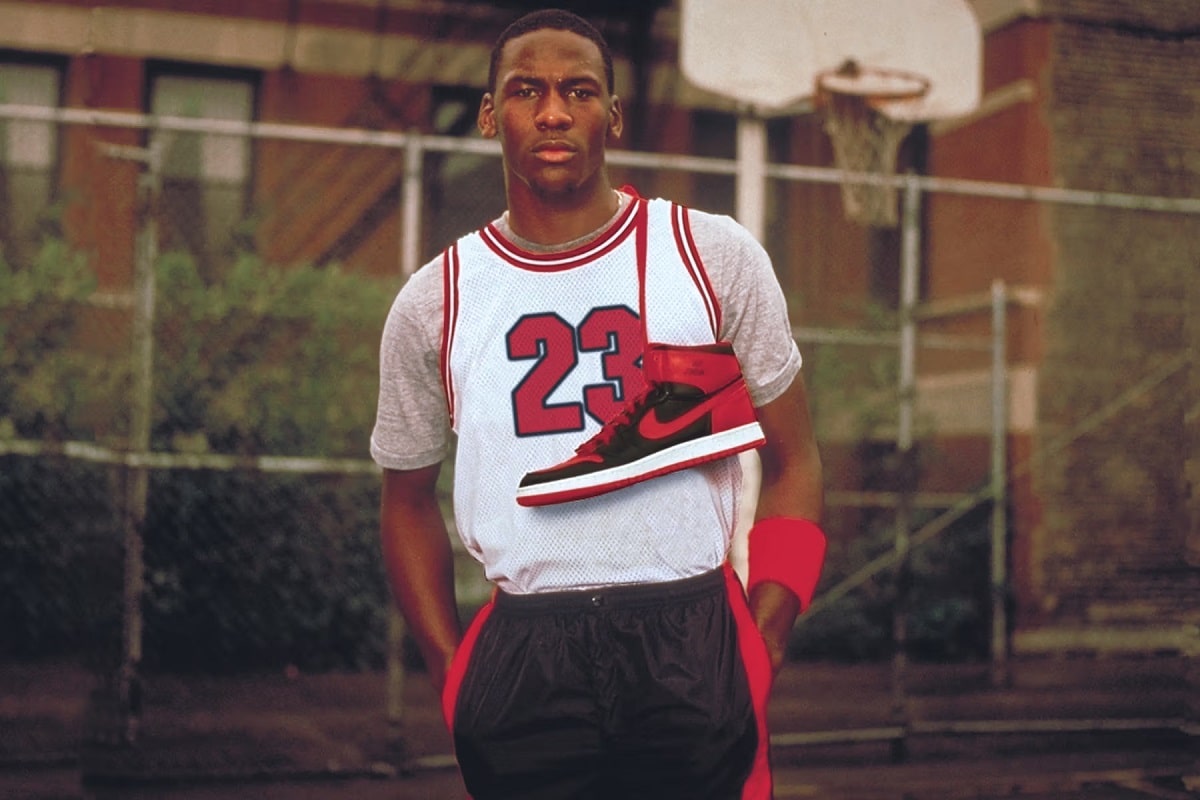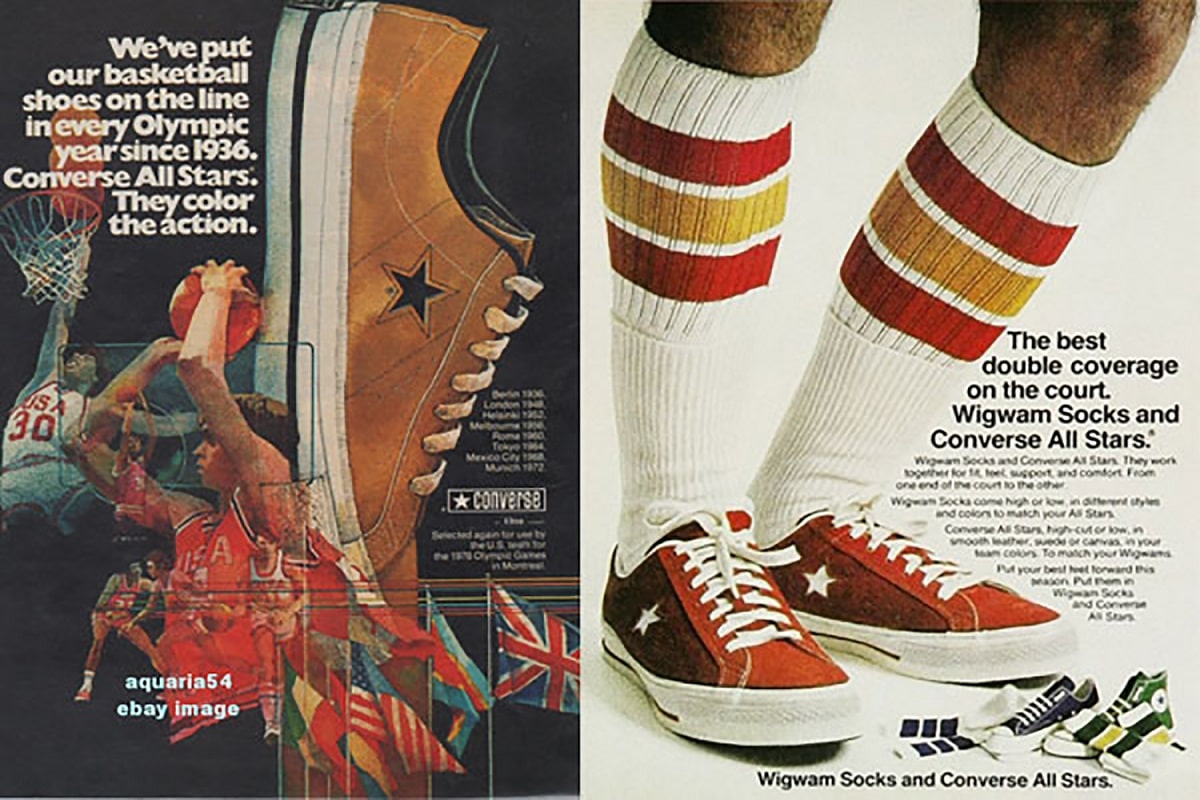1
HOME > Fashion History >
THE COMPLETE HISTORY OF SNEAKERS
A COMPREHENSIVE TIMELINE AND EVOLUTION
Written by Menswear Style in Fashion History on the 17th January 2024

The history of sneakers has evolved significantly since their inception in the 19th century, transforming them from purely functional sports shoes to cultural commodities and status symbols. This journey began in the 1830s with innovations from companies like The Liverpool Rubber Company and pioneers such as John Boyd Dunlop, who discovered how to bond canvas uppers to rubber soles. Another notable milestone in sneaker history was the invention of vulcanised rubber by American scientist Charles Goodyear in 1839, which allowed for manufacturing waterproof and mouldable sports shoes. Over time, sneakers gained popularity and their designs started reflecting both athletic and fashion trends. A breakthrough moment was in 1917 with the introduction of sneakers as a term by US advertiser Henry Nelson McKinney, depicting their stealthy, quiet nature due to their rubber soles. This period marked the beginning of sneakers becoming a cultural icon, eventually paving the way for sports brands, designer collaborations, and limited editions that define the global sneaker market today. In essence, sneakers have travelled a fascinating path, from serving a practical purpose on athletic fields and ship decks to becoming an influential component of modern fashion and pop culture. The versatility of sneakers continues to captivate consumers, athletes, and fashion enthusiasts alike, reflecting the ever-evolving face of the highly competitive and lucrative global sneaker market.
Evolution and Cultural Impact
Early Developments
In the 1830s, the Liverpool Rubber Company, founded by John Boyd Dunlop, created the earliest sports shoes by bonding canvas uppers to rubber soles. These sneakers became popular among Victorians for beach excursions and other leisurely pursuits. Historian Thomas Turner explains that the industrial progress and social change in the latter decades of the 19th century spurred a growing enthusiasm for sports like lawn tennis, creating a need for specialised footwear.

Rise of Iconic Brands
By the 1920s, shoe companies began designing sports shoes for various activities, such as basketball and tennis. Notable brands that emerged in this period included:
- Adidas: Founded in 1948 by Adolf Dassler as a continuation of his earlier venture, Gebrüder Dassler Schuhfabrik.
- Converse: Established in 1908 and rose to prominence with the release of Chuck Taylor All-Stars basketball shoes in 1917.
- Keds: Introduced in 1916 as the first mass-marketed canvas-top "sneakers."
- Nike: Launched in 1964 as Blue Ribbon Sports before rebranding in 1971.
- Puma: Established in 1948 by Rudolf Dassler, brother of Adolf Dassler, after the dissolution of Gebrüder Dassler Schuhfabrik.
- Reebok: Founded in 1958 by Joe and Jeff Foster, initially focusing on running shoes.
Sports and Fashion Fusion
Sports shoes began fusing with fashion as athletes and celebrities collaborated on endorsement deals and custom designs. For instance, Michael Jordan's partnership with Nike led to the creation of the iconic Air Jordans in 1984. The rise of casual sportswear and the athleisure trend also contributed to tennis shoes and trainers becoming fashionable objects.
Hip-Hop and Street Culture
Sneakers played a vital role in the development of hip-hop and street culture. In the 1980s, rap group Run-DMC popularised the Adidas Superstar shoes, further intertwining sneakers with music and fashion. The 1990s and 2000s saw artists like Kanye West collaborating with brands like Nike and Adidas, solidifying sneakers' status within street style and urban fashion.
Luxury and High Fashion
High fashion brands like Gucci and Balenciaga contributed to the growth of the luxury sneaker market, with many catwalk fashion shows featuring designer sports shoes. As sneakers penetrated the online luxury market, marketing and commercialisation intensified, leading to an increasing number of collaborations between high fashion brands and sportswear companies.
Sneakers in the Modern Era
In recent years, sneakers have become an undisputed cultural symbol, transcending sportswear into everyday fashion. The sneaker market has experienced tremendous growth, valued at approximately £56 billion in 2020 and predicted to reach £85 billion by 2026. Consequently, brands continue to explore partnerships and celebrity endorsements, driving the evolution and cultural impact of sneakers into the future.

Technology, Design, and Innovation
Material and Functional Advancements
The history of sneakers is rooted in technological advancements in shoe materials and design. In the early days, sneakers were made with rubber soles and canvas uppers, providing a more comfortable and quieter alternative to leather soles. The first sports shoes, created by The Liverpool Rubber Company in the 1830s, combined canvas uppers with rubber soles, marking a significant breakthrough in shoe manufacturing. Over the years, brands like Adidas, Nike, and Puma have driven innovations in footwear technology, leading to the development of more advanced materials and cushioning systems. One memorable example is the Nike Air, a cushioning system created by the brand in the late 1970s, which involved pressurised air units embedded in the sole of the shoe. Similarly, Reebok introduced the Energy Return System (ERS) in 1987, providing enhanced cushioning and shock absorption. Sneaker designs have also evolved to meet the specific needs of various sports. Hand-forged spikes, for instance, were introduced in the early 20th century to improve grip and traction for track athletes. Meanwhile, rowing enthusiasts have seen shoe designs adapted for improved performance on the water, with brands now offering specialised shoes for different sports.
Marketing Strategies and Global Expansion
The growth of the global sneaker market can be attributed to the clever marketing strategies employed by major brands. The Berlin Olympics in 1936, for example, was a pivotal event for Adidas founder Adi Dassler, who personally provided athlete Jesse Owens with custom-made shoes, subsequently catapulting the brand to international fame. Similarly, Nike co-founder Bill Bowerman's association with the University of Oregon's track programme boosted the brand's prominence in the world of athletics. Iconic collaborations between brands and celebrities, such as the Nike Air Jordans released in 1984 with basketball legend Michael Jordan, have also contributed significantly to the expansion of the sneaker market. Blockbuster films like Forrest Gump, featuring the famous Nike Cortez, have heightened public awareness and desire for sneakers, propelling the industry forward.
Shifts in Consumer Preferences
As sneakers have evolved, so too have consumer preferences. Originally intended for athletic purposes, street style and fashion trends began to take centre stage, leading to a proliferation of trendy designs. Sneaker culture has emerged as a niche interest, with dedicated collectors and enthusiasts frequently seeking out limited edition releases and exclusive collaborations. The pursuit of comfort has also played a role in changing consumer preferences. The recent pandemic and associated lockdowns have driven a rise in demand for loungewear and comfortable flat shoes among both men and women, further increasing the market for sneakers. In summary, the history of sneakers is marked by constant innovation, clever marketing strategies, and rapidly evolving consumer preferences. This has transformed sneakers from a functional item to a cultural icon, showcasing the power of technology, design, and adaptation.

Trending
2
3
4
5
6
7
8
9
10









